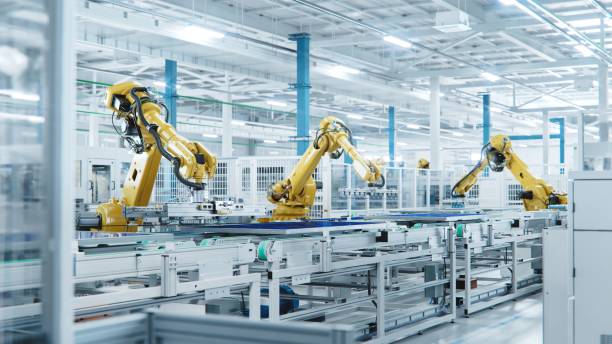Integrating automation to improve throughput on packing lines
Integrating automation into packing lines can raise throughput while stabilising quality and reducing repetitive manual tasks. Training programmes that focus on materials handling, design considerations, and compliance help teams adopt automation effectively. Practical exercises, prototyping, and metrics-focused instruction support smoother transitions and better alignment with ecommerce, fulfillment, and logistics requirements.

How does automation increase throughput?
Automation streamlines repetitive tasks such as case erecting, bagging, and palletising, reducing cycle times and human variability. Training should cover machine programming, basic troubleshooting, and changeover procedures so operators can maintain consistent speeds and reduce downtime. Emphasis on data-driven monitoring—such as throughput dashboards and OEE (Overall Equipment Effectiveness)—helps personnel interpret performance trends and make incremental improvements. Properly trained staff can balance line speed with quality checks to avoid costly rework while maintaining reliable output for peak ecommerce demand.
What materials affect packing line speed?
Materials selection influences how equipment handles products: rigid cartons, flexible films, and padded mailers each require different machine settings and infeed designs. Training modules should address material properties, supplier variability, and how prototyping small batches reveals handling issues before full deployment. Operators trained to recognise material-related jams or misfeeds can adjust tension, guides, and sensors to reduce stoppages. Including materials knowledge in packaging training also supports sustainability goals by enabling choices that balance protection, cost, and recyclability without sacrificing throughput.
How does design and prototyping influence flow?
Pack design and packaging engineering directly affect how quickly a line can operate. Training that integrates basic design principles—such as ease of closure, uniform orientation, and minimal manual adjustments—helps teams provide feedback to design and procurement. Rapid prototyping of packaging and conveyors during training exposes friction points early, allowing for iterative improvements. Cross-functional exercises with design, prototyping, and operations teams foster solutions that improve packing ergonomics, reduce changeover time, and support consistent throughput targets.
How can sustainability and recycling be integrated?
Sustainability considerations often intersect with automation choices: recyclable materials or lighter designs may change machine settings or require different labelling for compliance. Training should introduce recycling streams, material identification, and end-of-life handling so operators can accommodate sustainable packaging without disrupting flow. Practical sessions on converting lines to handle alternative materials, and on measuring trade-offs between packaging weight and protection, enable informed decisions. Aligning sustainability with automation planning reduces surprises and supports long-term logistics efficiency.
How does automation affect ecommerce, fulfillment, and logistics?
Ecommerce and modern fulfillment operations demand flexibility to handle variable SKU sizes and small-batch orders. Automation training should include case studies on modular equipment, quick-change tooling, and software integration with warehouse management systems. Hands-on exercises that simulate peak-period surges help teams practice prioritising orders, batching, and labelling strategies that maintain speed without compromising order accuracy. Understanding downstream logistics—such as carrier constraints and labelling standards—ensures automation choices support efficient transport and final-mile reliability.
How do compliance, labelling, and quality control fit in?
Regulatory compliance, accurate labelling, and consistent quality are essential to avoid returns and fines. Training must cover applicable regulations, barcode standards, and label placement best practices so automated labellers and vision systems operate correctly. Quality-control modules should teach sampling plans, sensor calibration, and root-cause analysis for defects detected on the line. Integrating quality checkpoints with automated rejects and feedback loops enables corrective actions that protect throughput while preserving product integrity.
Conclusion Scaling packing-line throughput through automation requires a blend of technical skill, packaging knowledge, and cross-functional coordination. Training that includes materials handling, prototyping, and practical machine operation—tied to sustainability, ecommerce needs, and compliance—helps organisations implement automation with fewer disruptions. Well-structured programmes enable teams to optimise design, reduce downtime, and sustain quality as throughput increases.






